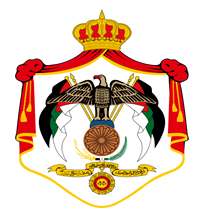Jordan: Government
Key Figures
- Chief of State:
- King Abdallah II
- Head of Government:
- Prime Minister Jafar Hassan
Overview
- Government Name:
- Hashemite Kingdom of Jordan
- Constitution:
- Adopted: 1947, but revised and ratified in 1952; Established a constitutional monarchy, separation of powers among executive and legislative while judicial remains independent, establishes rights of citizens.
- Government Type:
- Parliamentary Constitutional Monarchy

Index of Economic Freedom
Country Risk Rating
Government Branches
| Main Powers | Election Process | Election Cycle 1 | |
|---|---|---|---|
| Executive | The monarch holds wide executive and legislative powers, including the appointment of the prime minister and all seats of the senate. The monarch approves and dismisses judges; signs, executes and vetoes all laws; and can suspend or dissolve parliament. The prime minister is responsible for advising the king and executing the executive daily tasks as head of the government. |
The monarchy is hereditary. The prime minister is appointed by the monarch. |
No elections |
| Judicial | Supreme court of the land, enforces proper interpretation of the constitution. |
The chief justice is appointed by the king, while other judges are nominated by the higher judicial council and approved by the king. |
6 years |
| Legislative | Responsible for approving, rejecting, amending, and creating legislature and can override the king's veto by two-thirds vote. |
The Senate has 65 seats. |
4 years |
Regional Trade Blocs
International Organization Participation [2]
Environmental Agreements [3]
Tax Information [2]
- Tax Authority:
- Income and Sales Tax Department
- Tax Name:
- GST
Sources:
- ElectionGuide http://www.electionguide.org/
- EY, http://www.ey.com
- CIA World Factbook, https://www.cia.gov/the-world-factbook/
- U.S. Bilateral Relations Fact Sheets http://www.state.gov/r/pa/ei/bgn/


